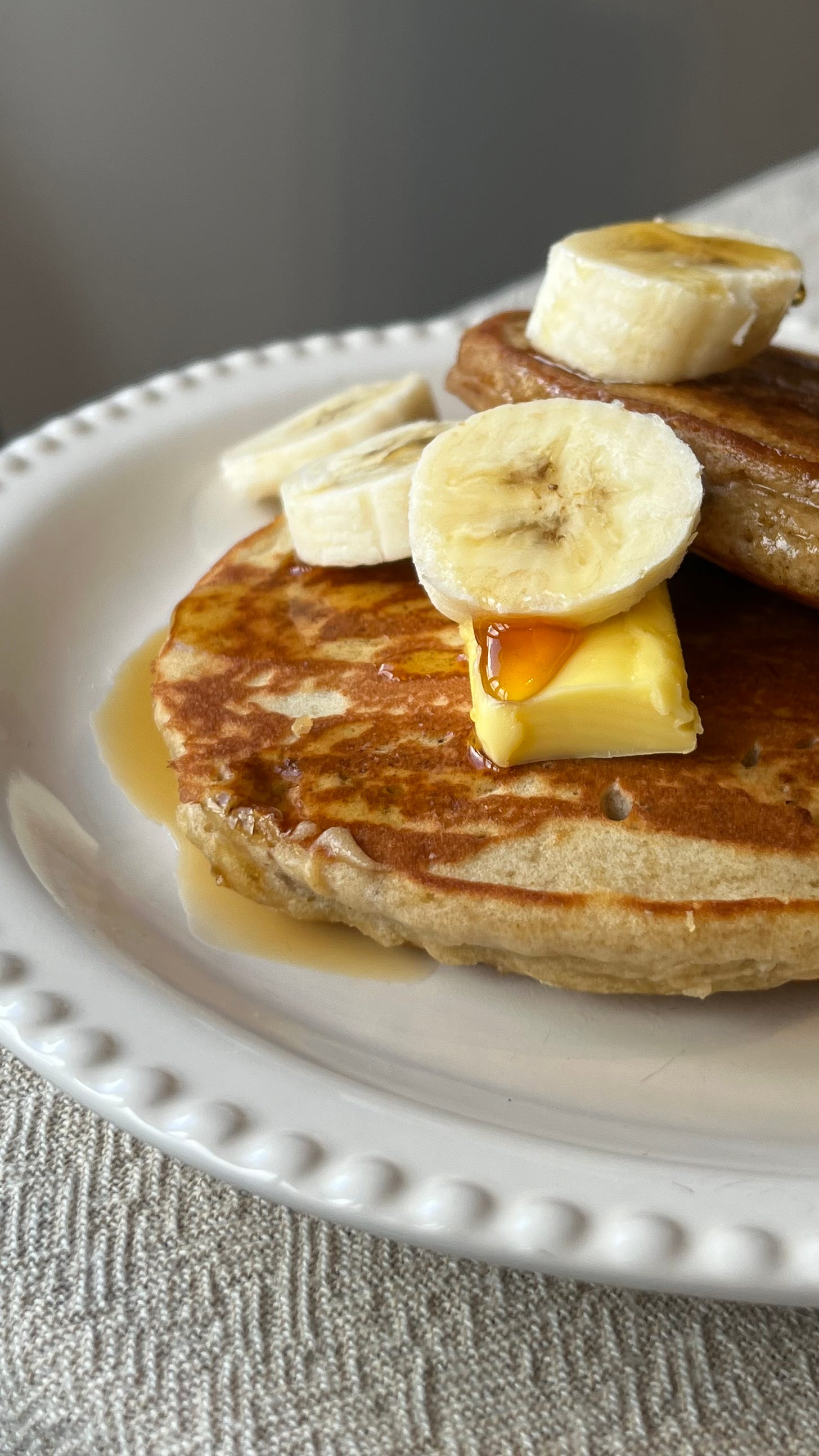What I’m reading: The Guest by Emma Cline. I loved this: quite dark, occasionally very funny and completely enthralling
What I’m listening to: Make Gaeilge Great Again: Áine Gallagher and Mollie Guidera on the Women’s Podcast with Róisín Ingle.
What I’m eating: pizza at the Beabea’s pop-up at Ragtag, Auckland. The corn pizza was my favourite (surprise), and there was also a very yummy Marmite-cheese garlic bread, all pictured below. I also got to try some of the pastries from Beabea’s, and they were as exceptional as expected (Kiwi onion pastry and a really excellent HXB).
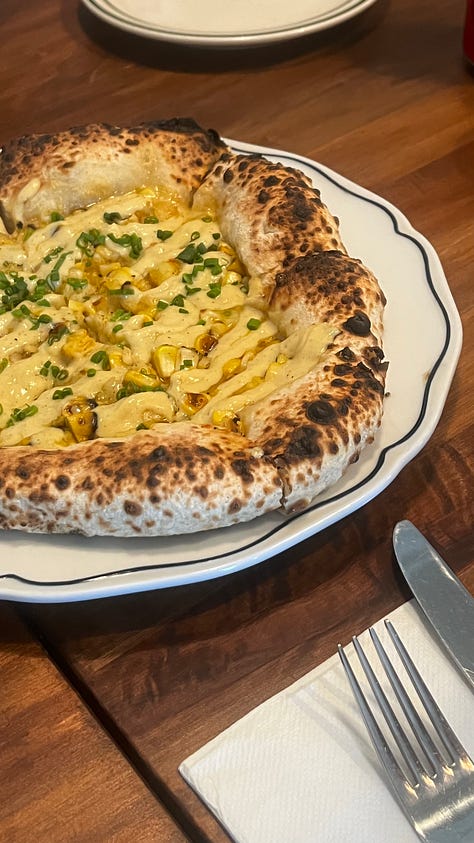
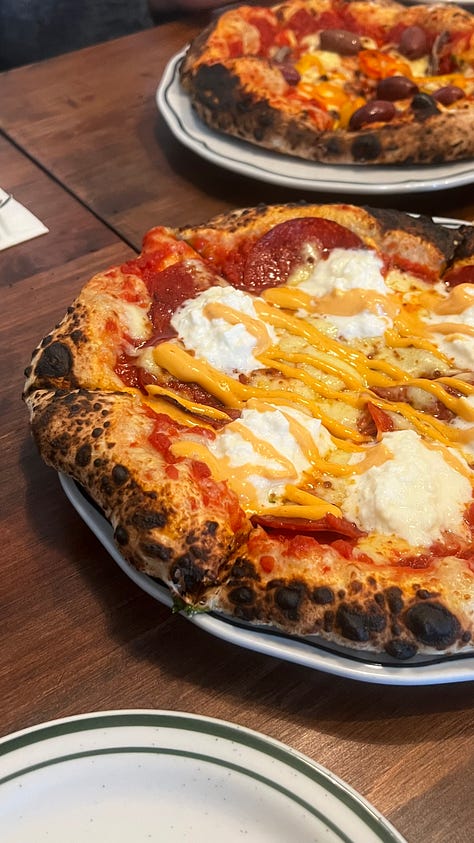
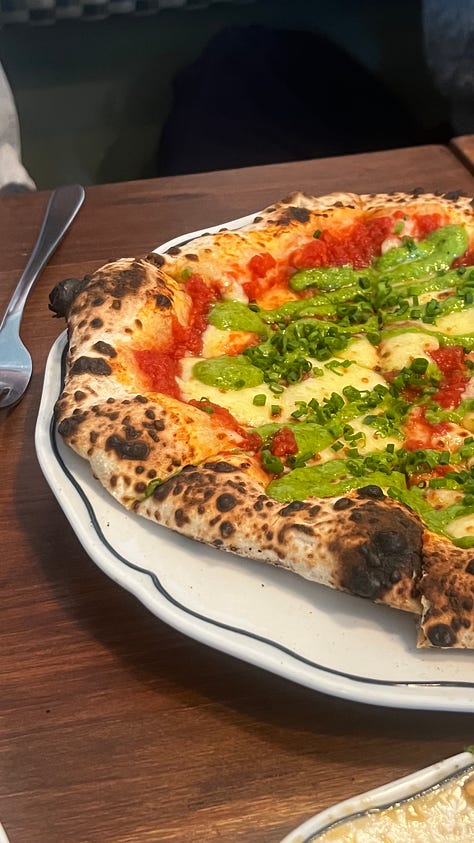
What is buckwheat?
Buckwheat is a seed used as a grain - and is part of the pseudocereal family (like quinoa and amaranth): seeds that, unlike actual cereals, do not grow on grass. Buckwheat is actually a flowering plant in the rhubarb family, and has no relation to wheat - it’s actually gluten free. It’s a good source of fibre, minerals and antioxidants, and has a low glycemic index compared to other sources of carbohydrate.
I first used buckwheat in baking when I was working at the Happy Tummy Co, where buckwheat is used frequently in conjunction with other nutritious seeds and grains (such as teff) to produce bread that is more digestible than most conventional loaves. It has a nutty, almost malty flavour, quite similar to rye.
What is a galette?
Galette translates from the Norman to “flat cake”, and its meaning has transmogrified over the centuries to designate a variety of baked goods. This used to confuse me to no end when I was growing up, being both a French language student and an avid pastry eater. Here’s a couple of types of galette you might encounter, to avoid confusion:
Galette as in crêpe: these galettes are essentially savoury crêpes or thin, unleavened pancakes. Galettes, though, are made with buckwheat flour, and are usually served with savoury fillings - like ham and cheese, mushrooms, eggs etc. They’re also usually served with four edges folded in to the centre, so that they’re square shaped
Galette as in tart: these galettes are free-form fruit tarts, usually made with rough puff or pâte brisée or pie dough or some such flaky pastry. The pastry is rolled out into an oblong or rectangular shape, filled with fruit and then the edges are folded in before it’s baked. They usually look quite rustic and are one of my favourite things to make - here’s a recipe if you’re interested.
Galette as in galette des rois: these galettes (king cakes) are made to celebrate the Epiphany on the 6th of January - when the three kings allegedly went to visit baby Jesus. They’re made with puff pastry, are usually circular and filled with almond frangipane, and hide a fève or little figurine, the finder of which is declared the king or queen for the day.
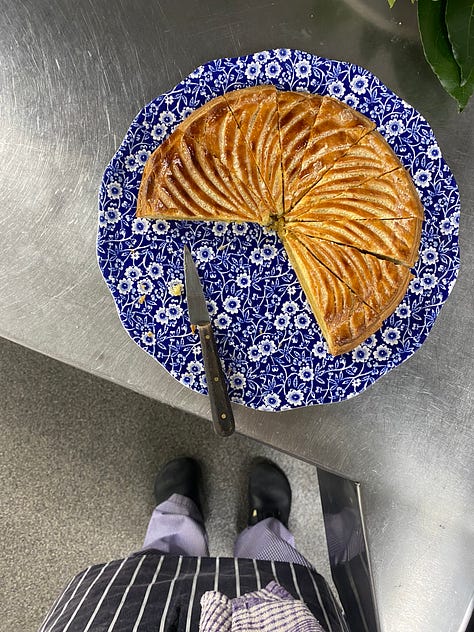

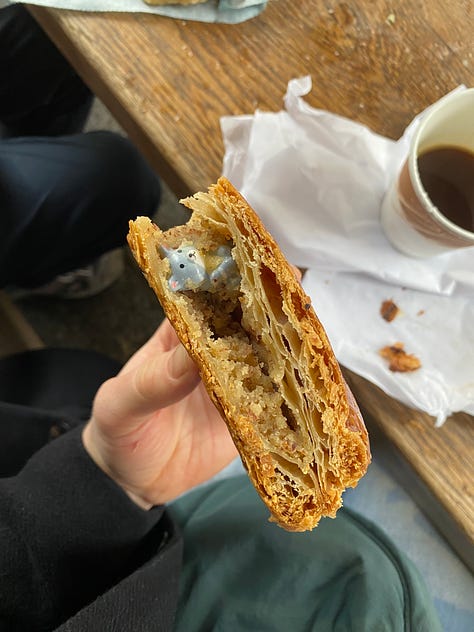
Banana pancake generational trauma?
When I decided to make banana pancakes, I initially felt a deep unshakeable sense of gloom, which took me a minute to identify. When I was a young teenager, susceptible to the vast and far-reaching influence of diet culture on the internet, there was a recipe that went viral for “3-ingredient pancakes”. These pancakes (comprising egg, banana and raising agent - baking powder or soda) were touted as low-carb, low-calorie, low-sugar pancakes - and let me tell you, they were also exceptionally low in joy. I would bet good money that the majority of the women in my generation remember making these pancakes, which essentially tasted like banana-infused scrambled eggs. Now there’s nothing wrong with banana-infused scrambled eggs, if that’s what puts a spring in your step in the morning - but please, for the love of god, can we stop pretending that they are a viable replacement for pancakes?
The process behind this buckwheat banana pancake recipe
Right, so we’ve already established that these pancakes bear no relation to the dreaded 3-ingredient fraud of the early 2010s. I wanted them to be wholesome and nourishing, but most of all delicious. I liked the idea of incorporating buckwheat because of the nice tie-in with the galette Breton - but I have a soft spot for American buttermilk pancakes, so based this recipe on my trusty fluffy pancakes, testing 50%, 75% and 100% buckwheat. It was a bit of a Goldilocks situation: the 50% buckwheat pancakes were a bit pale and uninteresting, while 100% buckwheat was a bit much - they ended up too heavy and dense. It turns out that you do need a little bit of gluten to make these pancakes nice and light - but I’m pretty happy with 75%, and I can honestly say that I felt sustained and satiated until lunchtime.
To serve, butter and maple syrup is my go-to, but feel free to go nuts with yogurt and granola, or even Nutella - I won’t judge.
recipe: banana buckwheat pancakes
Keep reading with a 7-day free trial
Subscribe to Tastebuds to keep reading this post and get 7 days of free access to the full post archives.







